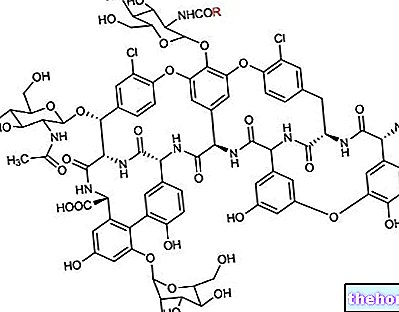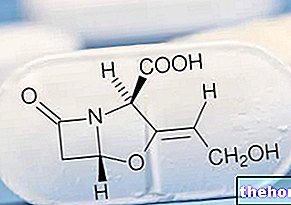
What is Neuraceq and what is it used for?
Neuraceq is a solution for injection that contains the active substance florbetaben (18F); it is a drug for diagnostic use only. Neuraceq is used in the brain spectroscopy technique in patients with memory impairments, to allow doctors to detect the presence or absence of significant amounts of β-amyloid plaques in the brain. Β-amyloid plaques are deposits sometimes found in the brains of people with memory problems caused by dementia (such as Alzheimer's disease, Lewy body dementia, and Parkinson's disease) as well as in the brains of some symptom-free elderly. The spectroscopic technique used with Neuraceq is called positron emission tomography (PET).
How is Neuraceq used - florbetaben?
Neuraceq can only be obtained with a prescription and Neuraceq PET scans should only be obtained by physicians experienced in the management of patients with degenerative diseases such as Alzheimer's disease. The medicine is given by injection into a vein approximately 90 minutes before acquiring a "PET image." The captured image is examined by physicians specially trained to interpret PET scans with Neuraceq. Patients should discuss the PET scan results with their physician.
How does Neuraceq work - florbetaben?
The active substance in Neuraceq, florbetaben (18F), is a type of medicine known as a radiopharmaceutical, which emits low amounts of radiation and works by attaching to β-amyloid plaques in the brain. After binding to the plaques, it emits radiation that can be detected on the PET exam, allowing doctors to know whether or not a significant number of plaques are present. If the PET scan shows few or no β-amyloid plaques (scan negative), the patient is unlikely to have Alzheimer's disease. However, a positive scan by itself is not sufficient to make a diagnosis in patients with memory impairment, as plaque is seen in various types of degenerative diseases as well as in some symptom-free elderly, clinicians will therefore need to interpret the scans in the light of a clinical evaluation.
What benefit has Neuraceq - florbetaben shown during the studies?
Neuraceq was investigated in a main study involving 216 volunteers, divided into two groups: a group of healthy young people and a group of very elderly patients, who had consented to an autopsy after death; 41 volunteers (10 healthy young people and 31 patients) completed the study and were included in the results. The study examined the sensitivity and specificity of PET scans (ie the accuracy of those scans in detecting plaque volunteers in the brain and the accuracy in distinguishing such subjects from plaque-free patients). Neuraceq PET scans have been shown to be highly specific and sensitive in detecting patients with significant amounts of β-amyloid plaques in the brain. At the end of the study, 31 patients had died and autopsies had been conducted to detect the presence or not. significant amounts of β-amyloid plaques in the brain. Comparing the autopsy results with PET scans showed a scan sensitivity of 77.4% and a specificity of 94.2%. This means that the PET scans were in able to correctly identify 77.4% of cases of patients with significant amounts of plaques as positive and that almost all subjects without significant plaques were correctly indicated as negative. These data were further confirmed by the results of new patients, analyzed at the end of the study.
What is the risk associated with Neuraceq - florbetaben?
The most common side effects with Neuraceq (which may affect up to 1 in 10 people) are pain and irritation at the injection site. For the full list of side effects and limitations reported with Neuraceq, see the package leaflet. Neuraceq releases a very low amount of radiation, with minimal risk of cancer or hereditary abnormalities.
Why has Neuraceq - florbetaben been approved?
The Agency's Committee for Medicinal Products for Human Use (CHMP) decided that Neuraceq's benefits are greater than its risks and recommended that it be approved for use in the EU. The results of the main study showed that PET scans acquired with Neuraceq detected the presence of β-amyloid plaques in the brain with a high sensitivity and specificity, so the results of the scans provided information similar to that obtained at autopsy. This is considered a significant improvement in diagnostic performance in patients with memory impairments who are evaluated for Alzheimer's disease and other types of degenerative diseases. However, there is still a risk of false positive results and, as a result, Neuraceq should not be used as the only diagnostic method for degenerative diseases, but should be used in conjunction with clinical evaluation.The safety profile of Neuraceq was considered reassuring and effects most common adverse events were identified in terms of injection site reactions.
However, the CHMP noted that due to the limited effects of currently available treatments for Alzheimer's disease, there is no robust evidence that early diagnosis due to the acquisition of Neuraceq PET scans and early management of therapy improves prognosis for the patient. Furthermore, Neuraceq has not been shown to be useful in predicting the development of Alzheimer's disease in patients with memory impairment or in monitoring patients' response to therapy.
What measures are being taken to ensure the safe and effective use of Neuraceq - florbetaben?
A risk management plan has been developed to ensure that Neuraceq is used as safely as possible. Based on this plan, safety information has been added to the summary of product characteristics and package leaflet for Neuraceq, including the appropriate precautions to be followed by healthcare professionals and patients. Further information can be found in the summary of the risk management plan.
More information about Neuraceq - florbetaben
On February 20, 2014, the European Commission issued a "Marketing Authorization" for Neuraceq, valid throughout the European Union. For more information on Neuraceq therapy, read the package leaflet (included with the EPAR) or consult your doctor. or the pharmacist. Last update of this summary: 02-2014
The information on Neuraceq - florbetaben published on this page may be out of date or incomplete. For a correct use of this information, see the Disclaimer and useful information page.




























